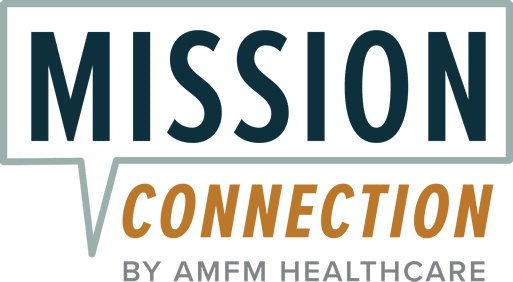Transcranial Magnetic Stimulation (TMS)
Transcranial Magnetic Stimulation (TMS) is a non-invasive, FDA-approved mental health treatment that has shown promising results for individuals struggling with treatment-resistant depression, anxiety, PTSD, and OCD. This innovative therapy uses magnetic pulses to stimulate nerve cells in areas of the brain that are linked to mood regulation and mental health disorders. At Mission Connection, we specialize in offering TMS therapy as part of our comprehensive mental health treatment programming, providing an alternative to traditional therapies. In this article, we’ll explore the benefits of TMS treatment, how it works, and its effectiveness in treating various mental health conditions, including whether TMS is expensive. Whether you’re seeking a solution for yourself or exploring alternative mental health therapies for a loved one, this page will guide you through everything you need to know about TMS therapy.

What is TMS Therapy?
Transcranial Magnetic Stimulation (TMS) therapy is a non-invasive procedure that uses magnetic fields to stimulate nerve cells in the brain. It is primarily used to treat mental health conditions such as treatment-resistant depression, anxiety, PTSD, and OCD. By targeting specific areas of the brain associated with mood and emotional regulation, TMS therapy offers an alternative to medication and other traditional treatments. This FDA-approved treatment is a safe and effective option for individuals who have not found relief through conventional therapies. What is TMS therapy? It’s a cutting-edge approach to mental health care that helps restore brain function and improve overall well-being without the need for invasive procedures or long recovery times.
How Does TMS Therapy Work?
- TMS therapy uses magnetic pulses to stimulate nerve cells in specific brain regions, particularly those involved in mood regulation. During TMS stimulation, these magnetic fields target areas like the prefrontal cortex, helping to activate underactive regions linked to conditions such as depression and anxiety. This process, known as transcranial magnetic stimulation, improves brain function and communication, offering a non-invasive way to treat mental health conditions without medication.
- TMS stimulates brain regions linked to mood control, improving symptoms of mental health conditions.

Mental Health Conditions Treated by TMS
TMS therapy is a versatile treatment option that can effectively address a range of mental health conditions, including treatment-resistant depression, anxiety, PTSD, and OCD. While the therapy uses the same foundational technique—stimulating brain regions responsible for mood regulation—each disorder requires a tailored treatment plan, as the brain areas affected and the symptoms can vary widely. The following sections will explore how transcranial magnetic stimulation (TMS) works for each condition, the individualized planning involved, and the expected results for each type of mental health challenge.
TMS Therapy for Depression
For individuals with treatment-resistant depression, where traditional therapies such as medication and psychotherapy have been ineffective, TMS therapy for depression offers new hope. By using magnetic pulses to stimulate underactive areas of the brain associated with mood regulation, TMS for depression helps restore normal brain function. Clinical outcomes have shown promising results, with many patients experiencing significant symptom reduction and improved mood. Research indicates that approximately 50-60% of patients undergoing TMS treatment for depression report a positive response, while about one-third achieve full remission. These statistics highlight the effectiveness of transcranial magnetic stimulation depression treatment as a powerful alternative for those who have not found relief through other methods.
TMS for Anxiety
TMS treatment for anxiety has emerged as an effective option for individuals struggling with chronic anxiety and panic disorders, especially when traditional treatments have not provided relief. By targeting the brain regions responsible for fear and stress responses, TMS for anxiety works to calm overactive areas that contribute to heightened anxiety levels. Clinical studies have demonstrated that TMS can significantly reduce symptoms of anxiety, with many patients reporting improved emotional regulation and a reduction in panic episodes. Success stories highlight that patients experience fewer anxiety symptoms after several sessions of TMS therapy, making it a promising treatment for long-term relief.
TMS for PTSD (Post-Traumatic Stress Disorder)
TMS therapy for PTSD has shown promising results in helping individuals manage the debilitating symptoms associated with post-traumatic stress disorder. By stimulating specific areas of the brain involved in memory and emotional processing, TMS treatment for PTSD helps regulate overactive neural circuits, reducing flashbacks, hyperarousal, and intrusive thoughts. Research studies have supported the effectiveness of TMS for PTSD, with many patients experiencing a reduction in symptom severity after several weeks of treatment. Clinical outcomes demonstrate that TMS therapy can provide significant relief for those who have not responded to traditional therapies, offering a non-invasive option to improve quality of life.
TMS for Obsessive-Compulsive Disorder (OCD)
TMS therapy for OCD offers a new avenue of relief for individuals struggling with obsessive-compulsive disorder, especially when traditional treatments like medication and therapy have proven insufficient. By targeting the brain circuits involved in compulsive behaviors and repetitive thoughts, TMS treatment for OCD helps reduce the intensity and frequency of symptoms. Current research shows that stimulating these specific areas of the brain can decrease compulsions and improve cognitive control. Clinical studies have shown promising results, with many OCD patients reporting significant symptom reduction after several sessions of TMS. As a non-invasive option, TMS therapy provides a hopeful alternative for those seeking more effective treatment for OCD.
TMS Consultation and Pre-Treatment Evaluation
Before starting TMS therapy, our mental health professionals conduct a thorough TMS therapy evaluation to determine if this treatment is the right fit for each individual. This process includes a detailed mental health evaluation, reviewing the patient’s medical history, current symptoms, and any previous treatment methods. During the TMS treatment consultation, clinicians assess whether the patient is dealing with conditions like treatment-resistant depression, anxiety, PTSD, or OCD, which are often responsive to TMS therapy. Ensuring the suitability for TMS treatment is crucial to achieving the best possible outcomes, as personalized treatment planning plays a significant role in long-term success.

What to Expect During a TMS Session
- Initial Setup: During a TMS therapy session, the patient is seated comfortably in a chair. A specialized coil is placed on the scalp, positioned to target specific brain regions involved in mood regulation.
- Magnetic Pulse Delivery: The TMS treatment begins as the machine delivers magnetic pulses through the coil. These pulses stimulate nerve cells in the brain without causing pain or discomfort. Patients may feel a light tapping sensation during the session.
- Session Duration: Each session typically lasts around 20 to 40 minutes, depending on the treatment plan designed by the healthcare provider.
- Frequency: For optimal results, most patients undergo TMS therapy five times a week for four to six weeks, though this may vary based on individual needs.
- Patient Experience: As a non-invasive procedure, TMS treatment requires no anesthesia, and patients can return to their daily activities immediately after each session. Side effects are minimal, often limited to mild scalp discomfort or headaches that usually resolve quickly.
Side Effects and Benefits/Risks of TMS
While TMS treatment is generally well-tolerated, common side effects include mild headaches, scalp discomfort at the treatment site, and occasional fatigue. These symptoms are typically short-lived and resolve soon after sessions. Compared to medication-based therapies, TMS therapy risks are significantly lower, as there are no systemic side effects like weight gain, sexual dysfunction, or nausea that are often associated with antidepressants. The benefits of TMS include its non-invasive nature, lack of long-term side effects, and its ability to provide relief for treatment-resistant conditions without the complications of medication.
Comprehensive TMS Treatment Planning
TMS therapy can be seamlessly integrated into comprehensive mental health treatment plans, often used alongside psychotherapy, medications, and other therapeutic approaches. For instance, patients may continue with cognitive behavioral therapy (CBT) or counseling while undergoing TMS treatment, enhancing the overall effectiveness of both therapies. In some cases, medication may still be prescribed to manage symptoms while TMS works to address underlying brain activity. By combining TMS therapy with these traditional approaches, mental health professionals can create a personalized plan that maximizes the chances of recovery, offering a multi-faceted approach to treating conditions like depression, anxiety, PTSD, and OCD.
The Role of Mental Health Professionals in TMS Programs
Successful TMS treatment involves close collaboration between a team of TMS mental health professionals, including psychiatrists, psychologists, and TMS technicians. Psychiatrists assess patient eligibility and monitor progress, while psychologists may provide complementary therapies such as CBT. TMS technicians administer the treatment, ensuring it is delivered precisely and safely. This coordinated care is essential to optimize the outcomes of TMS therapy, as each professional plays a critical role in the patient’s journey. By working together, the TMS treatment team ensures a comprehensive, personalized approach that leads to better long-term results for individuals managing mental health conditions.
Long-Term Maintenance and Follow-Up Care
After completing TMS therapy, regular follow-up appointments are crucial to monitor progress and make any necessary adjustments to the treatment plan. These sessions allow mental health professionals to assess symptom improvement and address any concerns. In some cases, additional TMS treatment maintenance sessions may be recommended to sustain the positive effects over time. By closely tracking outcomes and tailoring ongoing care, mental health professionals ensure that patients continue to benefit from TMS therapy, providing long-term relief from conditions like depression, anxiety, PTSD, and OCD.
Clinical Studies on TMS for Depression and Anxiety
Multiple clinical trials have demonstrated the effectiveness of TMS therapy for depression and TMS for anxiety. Studies show that approximately 50-60% of patients with treatment-resistant depression respond positively to TMS treatment, with around one-third achieving full remission. For individuals with anxiety disorders, research indicates significant symptom reductions, with many patients experiencing improved emotional regulation and decreased anxiety levels. These trials underscore the value of TMS treatment for depression and anxiety, offering a non-invasive alternative for individuals who have not found success with traditional therapies.
TMS Therapy vs. Other Mental Health Treatments
When comparing TMS therapy to traditional treatments like medication and psychotherapy, several key differences stand out. TMS treatment is highly effective for individuals with treatment-resistant conditions, offering a non-invasive option without the systemic side effects commonly associated with medications, such as weight gain, sexual dysfunction, or fatigue. While psychotherapy provides long-term coping strategies, TMS directly targets brain activity, making it a quicker solution for symptom relief. Additionally, unlike medications that require daily use, TMS therapy sessions are temporary and do not involve ongoing pharmaceutical intake, minimizing long-term health risks. For many, TMS treatment offers an effective alternative or complement to medication and talk therapy, particularly for individuals who haven’t found relief through traditional methods.
TMS vs. Electroconvulsive Therapy (ECT)
When comparing TMS therapy to Electroconvulsive Therapy (ECT), several key distinctions emerge. TMS vs. ECT primarily differs in terms of invasiveness. TMS therapy is non-invasive, using magnetic pulses to stimulate brain regions without the need for anesthesia, whereas ECT involves electrical stimulation under anesthesia and often causes short-term memory loss. The recovery time after TMS therapy is minimal, allowing patients to resume normal activities immediately after each session, while ECT typically requires longer recovery periods due to its more intensive nature. Side effects of TMS therapy are mild, such as light headaches or scalp discomfort, whereas ECT may result in more significant side effects like confusion, disorientation, and memory issues. Overall, TMS offers a gentler alternative to ECT for patients seeking effective mental health treatment without the invasiveness of traditional methods.
Finding a TMS Treatment Center
When searching for the right TMS treatment center, it’s important to find one that offers personalized care and experienced mental health professionals. At Mission Connection, we provide cutting-edge TMS therapy as part of our comprehensive mental health treatment programs. Our center is dedicated to offering non-invasive solutions for individuals with conditions like treatment-resistant depression, anxiety, PTSD, and OCD. With a team of compassionate and highly skilled professionals, Mission Connection ensures that each patient receives a tailored treatment plan that addresses their unique needs. If you’re considering TMS therapy, our team at Mission Connection is here to guide you through every step of the process, from initial evaluation to ongoing support.
What to Look for in a TMS Provider
When choosing a TMS clinic, there are several important factors to ensure you receive the best care. First, look for a TMS provider with proper certification and specialized training in administering TMS therapy. Experience is crucial—clinics with a track record of successful treatments are more likely to deliver effective outcomes. Additionally, the clinic should follow strict safety protocols to ensure a comfortable and secure environment for patients. At Mission Connection, our certified team prioritizes both patient safety and individualized care, offering a trusted option for those seeking effective TMS treatment.
TMS Accessibility and Insurance Coverage
Many insurance providers, including Medicare and private insurers, now offer coverage for TMS therapy, especially for conditions like treatment-resistant depression. The specifics of TMS insurance coverage can vary by provider, so it’s essential to confirm whether your plan includes this treatment. For patients without coverage, some clinics offer flexible payment plans or financing options to make TMS treatment more accessible. While many wonder, “Is TMS treatment expensive?”, the growing availability of insurance and alternative payment options makes this innovative therapy a viable solution for more individuals seeking relief from mental health conditions.
